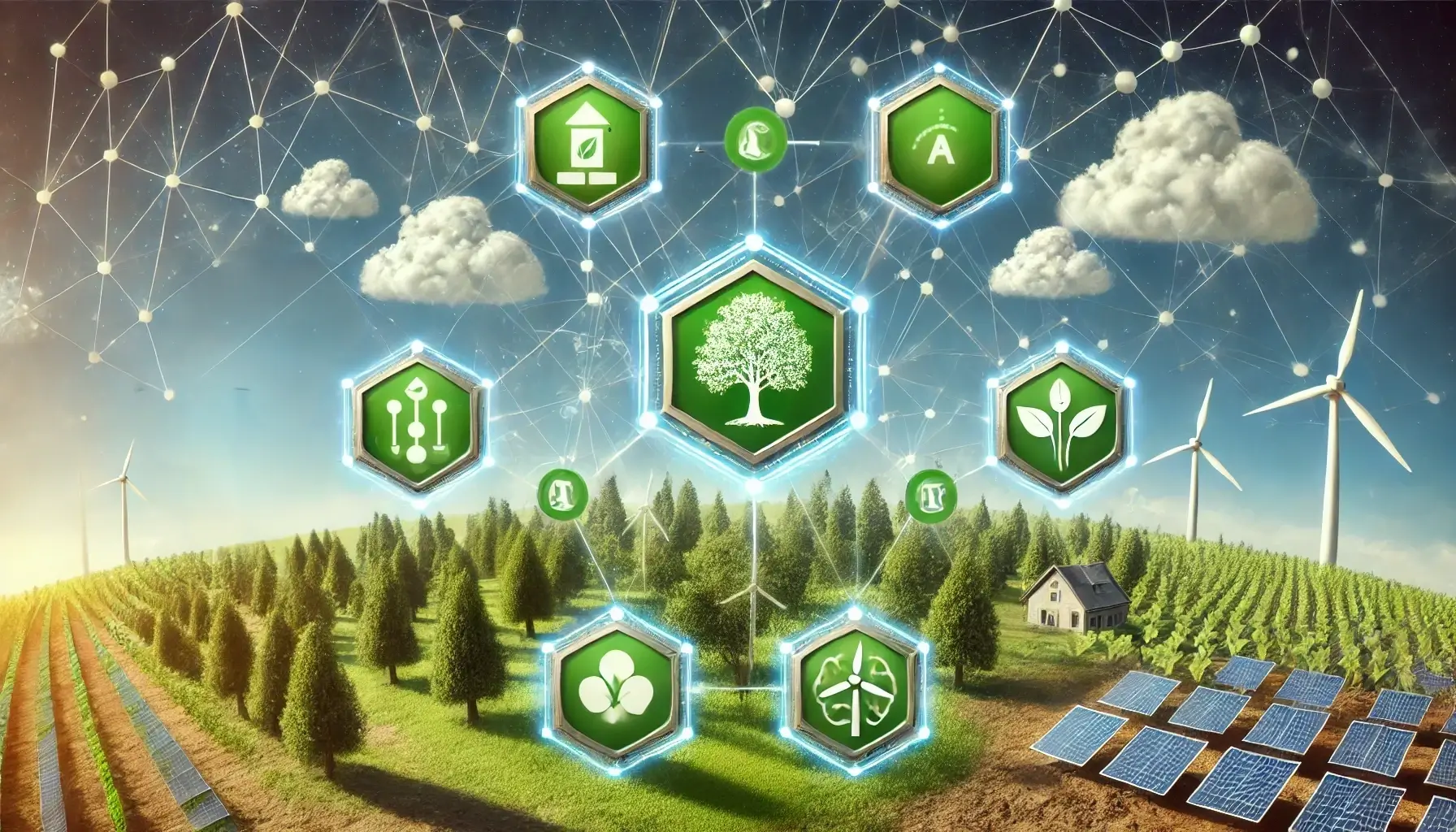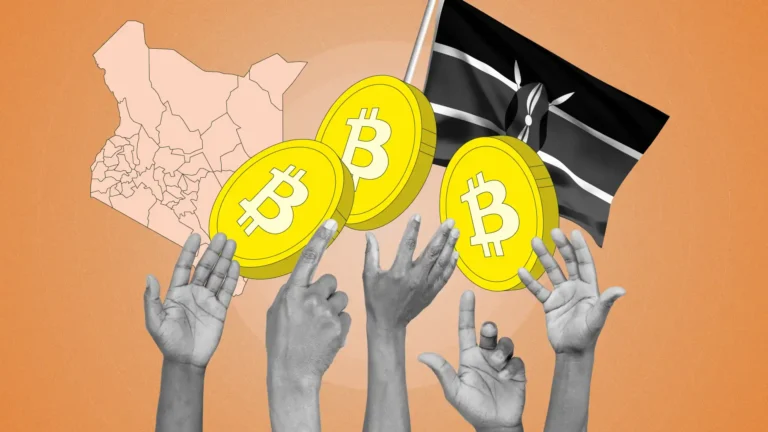The rise of Web3 has promised to reshape the digital landscape — decentralizing power, redefining ownership, and enabling an open internet built on transparency and trust. But amid the excitement, a pressing question lingers: Is Web3 sustainable? As blockchain technology becomes the backbone of decentralized ecosystems, concerns about energy consumption, carbon footprints, and environmental ethics …
The Environmental Impact of Web3: Can Decentralization Be Sustainable?

The rise of Web3 has promised to reshape the digital landscape — decentralizing power, redefining ownership, and enabling an open internet built on transparency and trust. But amid the excitement, a pressing question lingers: Is Web3 sustainable?
As blockchain technology becomes the backbone of decentralized ecosystems, concerns about energy consumption, carbon footprints, and environmental ethics have taken center stage. Can decentralization — the very principle that gives Web3 its strength — coexist with environmental responsibility? Or will it repeat the ecological missteps of traditional tech?
Let’s unpack the environmental impact of Web3 and explore how innovation is paving the way for a greener, more sustainable decentralized future.
The Energy Problem: How Blockchain Became an Environmental Flashpoint
At the heart of Web3 lies blockchain — a distributed ledger system that records and verifies transactions across thousands of nodes. This decentralized structure offers security and transparency but comes with a significant energy cost, especially for blockchains using proof-of-work (PoW) mechanisms.
Bitcoin and early versions of Ethereum relied on PoW — where miners compete to solve cryptographic puzzles, consuming massive amounts of computational power. This process, while secure, is notoriously energy-intensive.
For perspective:
- The Bitcoin network once consumed more electricity annually than some small nations, such as Argentina or the Netherlands.
- Ethereum, before its transition to Proof-of-Stake (PoS), consumed roughly 80–90 TWh per year, similar to the energy usage of Finland.
These staggering figures sparked global debates about the sustainability of crypto and Web3 technologies, with critics arguing that decentralization shouldn’t come at the planet’s expense.
The Turning Point: Ethereum’s Move to Proof-of-Stake
In 2022, Ethereum made headlines by transitioning from Proof-of-Work to Proof-of-Stake (PoS) through its long-awaited “Merge” upgrade — a milestone that slashed its energy consumption by over 99.95%.
Here’s how PoS works differently:
- Instead of miners using hardware to compete for rewards, validators “stake” their crypto as collateral.
- The network randomly selects validators to confirm transactions, removing the need for energy-intensive mining.
This shift demonstrated that blockchains can evolve toward sustainability without compromising decentralization or security. Ethereum’s success set a powerful precedent — one that other blockchains like Cardano, Solana, and Polkadot have followed by adopting energy-efficient consensus mechanisms from inception.
The result? A new era of green blockchains is emerging — scalable, secure, and far more sustainable than their predecessors.
Beyond Consensus: Where the Real Environmental Costs Lie
While consensus mechanisms often dominate the sustainability discussion, the environmental impact of Web3 extends further.
- Hardware Production and E-Waste:
Mining and validator nodes require specialized hardware, and frequent upgrades contribute to electronic waste. Responsible hardware recycling and optimization are becoming crucial to minimizing this footprint. - Cloud and Node Infrastructure:
Many decentralized applications (dApps) rely on cloud storage and distributed servers, which draw from traditional energy grids. Transitioning to green data centers powered by renewables can mitigate this impact. - NFT Minting and Trading:
The NFT boom brought sustainability concerns to the forefront. Early minting processes on PoW chains required substantial energy per token. However, with PoS and Layer-2 solutions, NFTs can now be minted at a fraction of the previous energy cost. - User Behavior:
Millions of users interacting with blockchain networks generate cumulative energy demand. Incentivizing eco-friendly participation — such as energy-efficient staking or carbon-offset rewards — is becoming a key design priority.
Green Innovations in Web3: The Path to Sustainability
The Web3 community isn’t ignoring the problem — it’s actively reinventing the technology to make decentralization environmentally viable.
Here’s how:
1. Layer-2 Scaling Solutions
Technologies like Polygon, Arbitrum, and Optimism process transactions off-chain before recording them in batches on the main blockchain. This drastically reduces the energy and computational load, making Web3 interactions faster and more eco-friendly.
2. Carbon-Neutral and Carbon-Negative Blockchains
Some blockchains are going a step further by not just reducing emissions but offsetting them entirely.
- Algorand operates as a carbon-negative blockchain, automatically offsetting emissions through carbon credits.
- Polygon has pledged to achieve net-zero emissions, investing in sustainability projects to counterbalance its footprint.
3. Renewable Energy-Powered Mining
Projects like SolarCoin and Sun Exchange are exploring how renewable energy can directly power mining operations, linking blockchain validation to solar and wind power generation.
4. Proof-of-Green Initiatives
Emerging models like Proof-of-Green (PoG) reward nodes that verify sustainable behavior — such as using renewable energy or participating in eco-initiatives — ensuring environmental accountability within decentralized systems.
5. Circular Economy in NFTs and Gaming
Web3 gaming and NFT projects are incorporating sustainability into design — using eco-friendly minting, carbon offsets, and recycled digital assets to reduce waste and energy usage.
Web3 and Climate Action: A Surprising Ally
Ironically, while Web3 faces criticism for its energy demands, it also holds enormous potential to fight climate change.
- Transparent Carbon Tracking:
Blockchain enables transparent recording of carbon credits, making it easier to verify and trade offsets without fraud. - Decentralized Energy Grids:
Web3 platforms like Power Ledger and Energy Web use blockchain to support peer-to-peer renewable energy trading — allowing users to sell excess solar power directly to neighbors. - Tokenized Climate Incentives:
Decentralized finance (DeFi) can reward sustainable behavior — such as investing in green projects or reducing emissions — through tokenized incentives and smart contracts. - Environmental DAOs:
DAOs (Decentralized Autonomous Organizations) are pooling global resources for ecological action, funding reforestation, conservation, and sustainability projects in a transparent, community-driven manner.
In short, Web3 isn’t just part of the problem — it’s becoming part of the solution.
Challenges to a Sustainable Web3 Future
Despite progress, the path to a truly sustainable Web3 isn’t without obstacles:
- Regulatory Ambiguity: Governments have yet to establish clear sustainability standards for blockchain operations.
- Greenwashing Risks: Some projects falsely market themselves as eco-friendly without verifiable proof.
- Infrastructure Limitations: Access to renewable energy varies globally, making sustainable operation harder in some regions.
- Economic Incentives: Balancing profit motives with environmental responsibility remains an ongoing challenge.
Sustainability must move beyond marketing — it must be baked into the architecture of Web3 itself.
Toward an Eco-Conscious Decentralized Future
The next phase of Web3 will be defined not just by decentralization and innovation, but by sustainability and stewardship. Developers, investors, and users all share responsibility for ensuring that the decentralized revolution doesn’t come at the planet’s expense.
We are witnessing the birth of Green Web3 — where environmental consciousness becomes integral to blockchain design.
Future blockchains will be:
- Energy-Efficient by Default
- Transparent in Carbon Accounting
- Interconnected with Renewable Energy Networks
And as this vision takes shape, decentralization will no longer mean trade-offs between freedom and sustainability — it will mean both.
Final Thought
The Web3 movement was built on the idea of empowerment and innovation without permission. Now, it faces a new challenge — growth without destruction.
The good news? Sustainability isn’t an obstacle to decentralization — it’s its next great frontier.
As blockchain technology matures, it’s proving that a decentralized internet can also be a sustainable one — where transparency extends not just to data and governance but to our impact on the Earth itself.
In the end, the question isn’t whether Web3 can be sustainable — it’s whether we choose to make it so. And the choice, fittingly, is in the hands of the community that built it.







